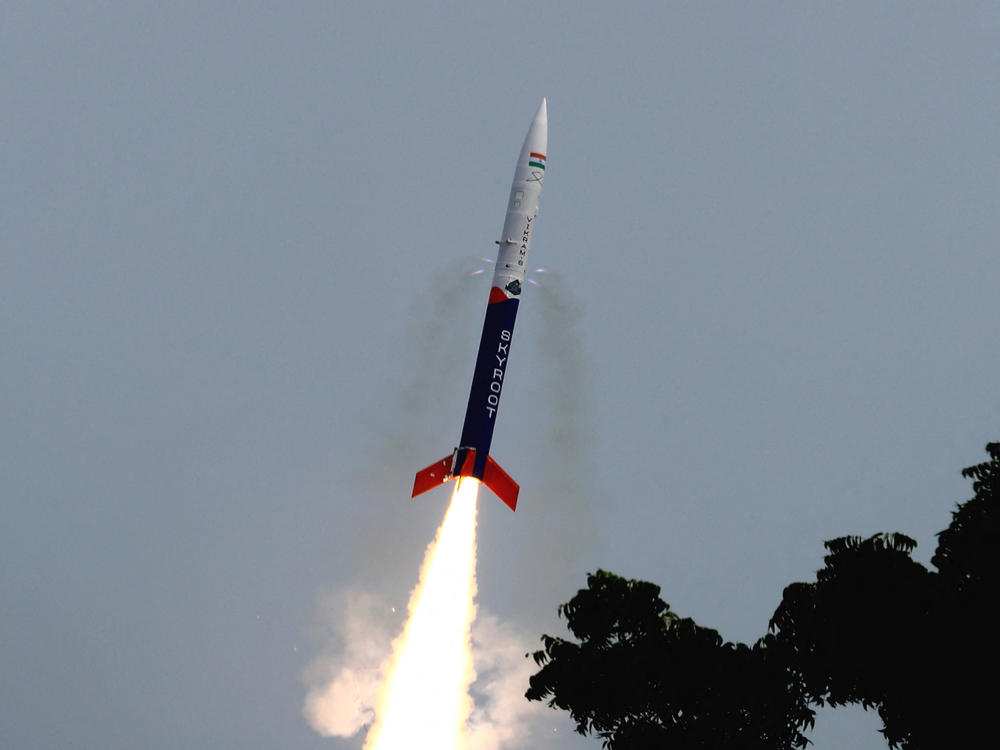Section Branding
Header Content
Indian startup launches country's first privately built rocket
Primary Content
An Indian aerospace startup has launched the country's first privately made rocket – a milestone in India's effort to foster a private space industry.
The rocket, called Vikram-S, was launched to applause from onlookers Friday morning from the government-run Satish Dhawan Space Center, near the city of Chennai.
It reached a peak altitude of 89.5 km, or about 55.6 miles. That's higher than NASA's designated Earth-space boundary of 50 miles, but short of the Kármán line (about 62 miles above Earth), which is often considered the boundary of space.
The rocket was aloft for about five minutes, and reached Mach 5, five times the speed of sound.
The company behind the rocket is Skyroot, based in Hyderabad and founded by former engineers in the Indian Space Research Organization. The rocket is named after Vikram Sarabhai, the father of India's space program.
The launch went just as anticipated, said Pawan Kumar Goenka, the chairman of IN-SPACe, an agency within India's department of space.
"All systems as I can make out worked as planned, and Skyroot Aerospace has demonstrated capability of various subsystems that will go into the orbital launch vehicle," he said after the rocket splashed down in the Bay of Bengal.
Narendra Modi, India's controversial prime minister, tweeted praise of the successful launch.
"A historic moment for India as the rocket Vikram-S, developed by Skyroot Aerospace, took off from Sriharikota today! It is an important milestone in the journey of India's private space industry," he wrote. "This accomplishment bears testimony to the immense talent of our youth, who took full advantage of the landmark space sector reforms of June 2020."
Skyroot was the first company to sign an agreement with the country's space program to launch rockets.
Billionaires Jeff Bezos and Richard Branson both launched themselves into space last summer aboard vessels built by their own competing space-tech companies.
Copyright 2022 NPR. To see more, visit https://www.npr.org.

